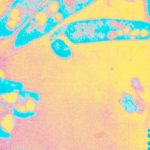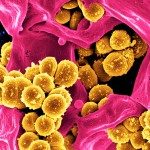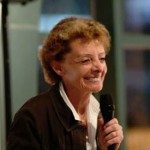Lien vers Pubmed [PMID] – 22412380
Lien vers HAL – hal-01136644
Lien DOI – 10.1371/journal.pgen.1002529
PLoS Genetics, 2012, vol. 8 (n° 3), pp. 1-12. ⟨10.1371/journal.pgen.1002529⟩
The High Pathogenicity Island of Yersinia pseudotuberculosis IP32637 was previously shown to be horizontally transferable as part of a large chromosomal segment. We demonstrate here that at low temperature other chromosomal loci, as well as a non-mobilizable plasmid (pUC4K), are also transferable. This transfer, designated GDT4 (Generalized DNA Transfer at 4uC), required the presence of an IP32637 endogenous plasmid (pGDT4) that carries several mobile genetic elements and a conjugation machinery. We established that cure of this plasmid or inactivation of its sex pilus fully abrogates this process. Analysis of the mobilized pUC4K recovered from transconjugants revealed the insertion of one of the pGDT4–borne ISs, designated ISYps1, at different sites on the transferred plasmid molecules. This IS belongs to the IS6 family, which moves by replicative transposition, and thus could drive the formation of cointegrates between pGDT4 and the host chromosome and could mediate the transfer of chromosomal regions in an Hfr-like manner. In support of this model, we show that a suicide plasmid carrying ISYps1 is able to integrate itself, flanked by ISYps1 copies, at multiple locations into the Escherichia coli chromosome. Furthermore, we demonstrate the formation of RecA-independent cointegrates between the ISYps1-harboring plasmid and an ISYps1-free replicon, leading to the passive transfer of the non-conjugative plasmid. We thus demonstrate here a natural mechanism of horizontal gene exchange, which is less constrained and more powerful than the classical Hfr mechanism, as it only requires the presence of an IS6-type element on a conjugative replicon to drive the horizontal transfer of any large block of plasmid or chromosomal DNA. This natural mechanism of chromosome transfer, which occurs under conditions mimicking those found in the environment, may thus play a significant role in bacterial evolution, pathogenesis, and adaptation to new ecological niches.






